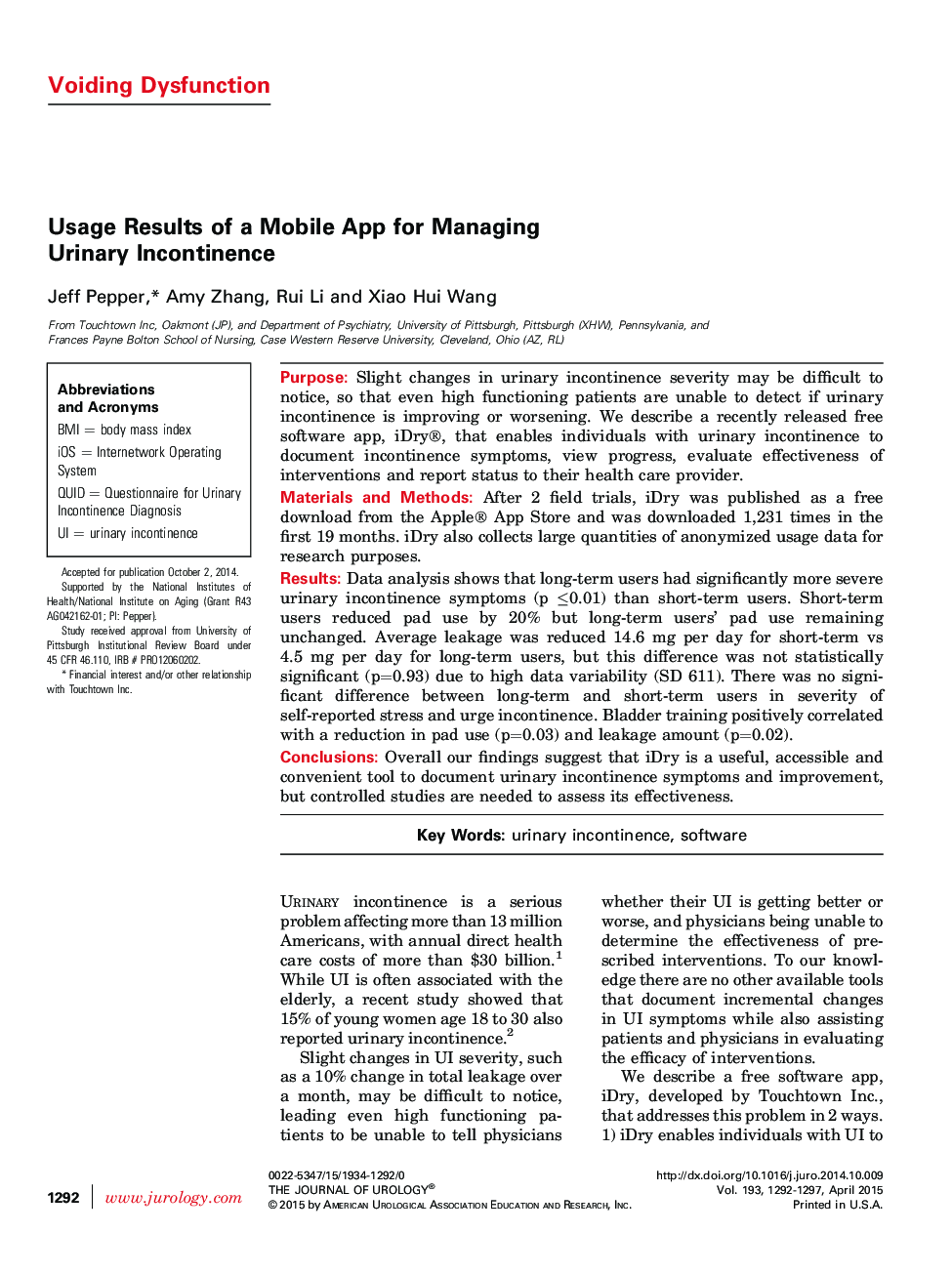| Article ID | Journal | Published Year | Pages | File Type |
|---|---|---|---|---|
| 3861552 | The Journal of Urology | 2015 | 6 Pages |
PurposeSlight changes in urinary incontinence severity may be difficult to notice, so that even high functioning patients are unable to detect if urinary incontinence is improving or worsening. We describe a recently released free software app, iDry®, that enables individuals with urinary incontinence to document incontinence symptoms, view progress, evaluate effectiveness of interventions and report status to their health care provider.Materials and MethodsAfter 2 field trials, iDry was published as a free download from the Apple® App Store and was downloaded 1,231 times in the first 19 months. iDry also collects large quantities of anonymized usage data for research purposes.ResultsData analysis shows that long-term users had significantly more severe urinary incontinence symptoms (p ≤0.01) than short-term users. Short-term users reduced pad use by 20% but long-term users’ pad use remaining unchanged. Average leakage was reduced 14.6 mg per day for short-term vs 4.5 mg per day for long-term users, but this difference was not statistically significant (p=0.93) due to high data variability (SD 611). There was no significant difference between long-term and short-term users in severity of self-reported stress and urge incontinence. Bladder training positively correlated with a reduction in pad use (p=0.03) and leakage amount (p=0.02).ConclusionsOverall our findings suggest that iDry is a useful, accessible and convenient tool to document urinary incontinence symptoms and improvement, but controlled studies are needed to assess its effectiveness.
